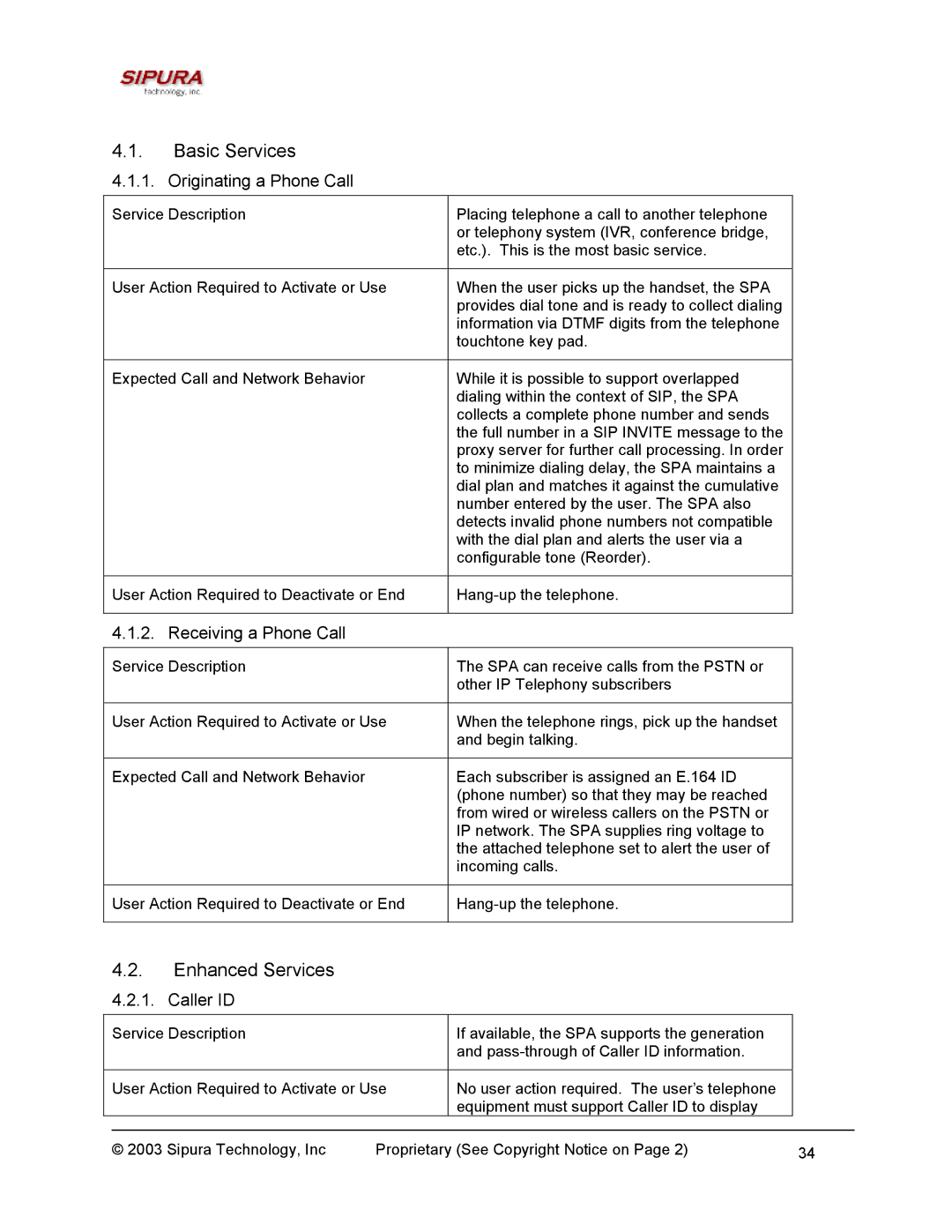4.1.Basic Services
4.1.1. Originating a Phone Call
Service Description | Placing telephone a call to another telephone |
| or telephony system (IVR, conference bridge, |
| etc.). This is the most basic service. |
|
|
User Action Required to Activate or Use | When the user picks up the handset, the SPA |
| provides dial tone and is ready to collect dialing |
| information via DTMF digits from the telephone |
| touchtone key pad. |
|
|
Expected Call and Network Behavior | While it is possible to support overlapped |
| dialing within the context of SIP, the SPA |
| collects a complete phone number and sends |
| the full number in a SIP INVITE message to the |
| proxy server for further call processing. In order |
| to minimize dialing delay, the SPA maintains a |
| dial plan and matches it against the cumulative |
| number entered by the user. The SPA also |
| detects invalid phone numbers not compatible |
| with the dial plan and alerts the user via a |
| configurable tone (Reorder). |
|
|
User Action Required to Deactivate or End | |
|
|
4.1.2. Receiving a Phone Call |
|
|
|
Service Description | The SPA can receive calls from the PSTN or |
| other IP Telephony subscribers |
|
|
User Action Required to Activate or Use | When the telephone rings, pick up the handset |
| and begin talking. |
|
|
Expected Call and Network Behavior | Each subscriber is assigned an E.164 ID |
| (phone number) so that they may be reached |
| from wired or wireless callers on the PSTN or |
| IP network. The SPA supplies ring voltage to |
| the attached telephone set to alert the user of |
| incoming calls. |
|
|
User Action Required to Deactivate or End | |
|
|
4.2.Enhanced Services
4.2.1.Caller ID
Service Description |
| If available, the SPA supports the generation |
| |
|
|
| and |
|
|
|
| ||
User Action Required to Activate or Use | No user action required. The user’s telephone |
| ||
|
|
| equipment must support Caller ID to display |
|
|
|
|
|
|
© 2003 Sipura Technology, Inc | Proprietary (See Copyright Notice on Page 2) | 34 | ||
